Seosan Ganworam Hermitage (간월암(서산))
0m 55318 2023-01-02
119-29, Ganwoldo 1-gil, Seosan-si, Chungcheongnam-do
+82-41-668-6624
Ganworam is a small hermitage located in Ganwoldo-ri in Seosan-si, Chungcheongnam-do. Ganworam Hermitage was created by the Great Monk Muhak, the monk to King Taejo of the Joseon dynasty. The name of the hermitage is directly tied with Muhak himself as it is said Muhak became enlightened while meditating under the moon (wol means moon in Korean) at this hermitage. At low tide, Ganworam Hermitage is connected to shore via a natural walkway, but at high tide, the walkway is submerged and the hermitage becomes an island. At night time, in particular, the hermitage and its surrounding islets create a breathtaking view as the moonlight reflects off the sea.
Cheonsuman Bay - Migratory Bird Sanctuary (천수만(철새도래지))
3.2 Km 28862 2021-05-21
Buseok-myeon & Gobuk-myeon, Seosan-si, Chungcheongnam-do
+82-41-661-8054
Cheonsuman Bay emerged as a habitat for migratory birds as a result of a reclamation project that was undertaken in 1984. A breakwater was built around this area, which created Ganwolho Lake and Bunamho Lake. Moreover, a vast agricultural land spanning 6,400 hectares was formed on what used to be a mud flat. The monthly average temperature of Cheonsuman Bay area between October and March is about 1.2 degree Celsius higher than inland areas at the same latitude because of its oceanic climate. Such geographical conditions have made Cheonsuman Bay an ideal wintering site for migratory birds.
Cheonsuman Bay is located midway along the migration route of birds migrating from northern Siberia or Manchuria to Southeast Asia. As a result, Cheonsuman Bay has become home to nearly 200 different species of migratory birds that can be watched all year round. In winter, the area becomes a wintering site for over 300 thousand ducks and wild geese, as well as a wide variety of endangered species like storks, spoonbills, mute swans, and white-naped cranes. Lucky birdwatchers might be able to witness the great spectacle created by tens of thousands of migratory birds flying in a flock over the Cheonsuman Bay area.
Chuyangsa Shrine (추양사)
8.4 Km 0 2024-01-15
25 Jisan 5-gil, Seobu-myeon, Hongseong-gun, Chungcheongnam-do
Chuhyangsa Shrine is located in Hongseong-gun, Chungcheongnam-do, and is dedicated to Kim Bokhan, also known as Jisan. The site holds memorial rites every year for the followers and descendents of Kim Bokhan.
Kkotgedari Ocean Bridge (꽃게다리)
8.7 Km 5561 2024-02-22
Changgi-ri, Anmyeon-eup, Taean-gun, Chungcheongnam-do
Inspired by the blue crab, the Kkotgedari Ocean Bridge links Taean's Deureuni Port with Anmyeondo Island's Baeksajang Port. The bridge is decorated with sculptures of blue crab and shrimp,highlighting the region's most significant seafood. It provides spectacular views of the Yellow Sea and sunsets. At night, the bridge is lit up with stunning lights. Nearby, a market offers the opportunity to browse, buy, and taste seafood freshly caught from the Yellow Sea.
Hongseong Namdanghang Port Jumbo Shrimp Festival (홍성 남당항 대하축제)
8.9 Km 26270 2022-11-11
213-1, Namdanghang-ro, Hongseong-gun, Chungcheongnam-do
• 1330 Travel Hotline: +82-2-1330 (Korean, English, Japanese, Chinese) • For more info: +82-10-3288-9551
Namdanghang Port, located at the west end of Hongseong, is a famous west coast port known for its exceptional seafood. Surrounded by the clean waters of Cheonsuman Bay, Namdahang Port is home to a wide array of sea life including blue crab, cockle and webfoot octopus. Namdanghang Port also draws throngs of visitors from early September to mid-October every year for the country’s largest Jumbo Shrimp Festival.
Anmyondo Jurassic Museum (안면도 쥬라기박물관)
9.0 Km 25798 2024-02-26
37-20 Gomseom-ro, Nam-myeon, Taean-gun, Chungcheongnam-do
The Anmyondo Jurassic Museum is a natural history museum boasting Korea's largest collection of dinosaur fossils. Its collection features dinosaur specimens such as Diplodocus and Tyrannosaurus, along with dinosaur eggs, sourced from the United States and Argentina. Nearby attractions include Anmyondo Jurassic Park, a meteorological observatory, and various accommodations such as pensions.
Hongseong Namdang Port Saejogae Festival (홍성남당항 새조개축제)
9.0 Km 89385 2024-01-24
1-1 Namdanghang-ro 213beon-gil, Seobu-myeon, Hongseong-gun, Chungcheongnam-do
+82-41-634-0104
Hongseong Namdang Port Saejogae Festival celebrates the saejogae (egg cockle) that is harvested around Namdang Port and Cheonsuman Bay between December and April of every year. The plump saejogae are famous for their chewy texture and nutritional value, full of protein, iron, and other essential minerals.
Namdanghang Port (남당항)
9.0 Km 15674 2020-04-24
Namdang-ri, Hongseong-gun, Chungcheongnam-do
+82-41-630-1224
Namdanghang Port is one of the representative ports of the West Coast. Known for having plenty of prawn, cockle, flat fish, rock fish and other types of seafood, the port draws visitors all year round. You’ll often see people out scouring the shoreline of the port for cockles, which are usually enjoyed as cockle shabu shabu or charcoal-grilled cockle, top local delicacies. A nearby attraction to visit is the bamboo grove of Jukdo Island
Baeksajang Beach (백사장해수욕장)
9.1 Km 28068 2021-07-01
Changgi-ri, Taean-gun, Chungcheongnam-do
+82-41-670-2691
Baeksajang Beach is located near Baeksajangpogu Port which is just 4 kilometers southwest of Anmyeon-do Yeonyukgyo Bridge, the bridge connecting the mainland to the island. The beach has a long stretch of shimmering white sand and the ebbing tide creates a different view of the horizon. Though the water level has a large tidal range, the beach's moderate water temperature makes it suitable to swim even in late summer. The beach is 1.2 kilometers long and 300 meters wide, and is made up of fine silica sand.
Baeksajang Beach and the nearby Sambong Beach is one of the major sources of jumbo shrimp. During autumn, crowds come to enjoy the taste of fresh jumbo shrimp. The beach even holds a prawn festival every fall when jumbo shrimp production peaks.
Sambong Beach (삼봉해수욕장)
9.2 Km 11696 2022-07-29
Anmyeon-eup, Taean-gun, Chungcheongnam-do
+82-41-670-2691
Sambong Beach is located to the south of the bridge that connects Nammyeon and Anmyeon-eup. The beach stretches 3.8 kilometers and has a x_width of 300 meters. The beach gently slopes down at a 6° angle and has an average water depth of 1.5 meters with a temperature of 22° C. The three Sambong Rocks, the Haedanghwa flower (plena) and the rich pine forests are just a few of the beautiful and magnificent features of this beach. Also, the beach attracts many visitors during summer because it has convenient transportation making it easily accessible.

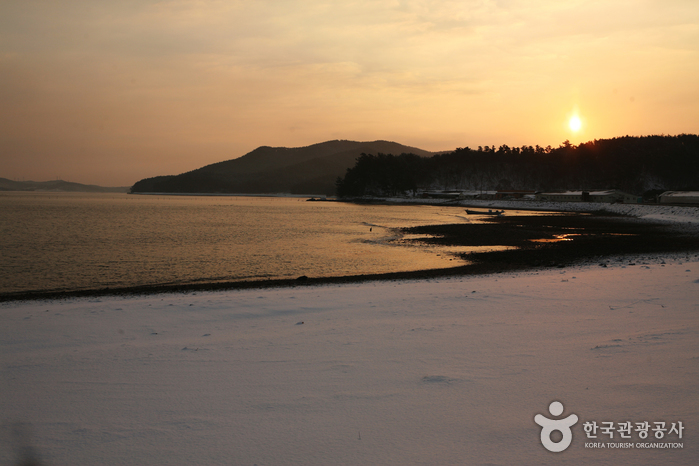
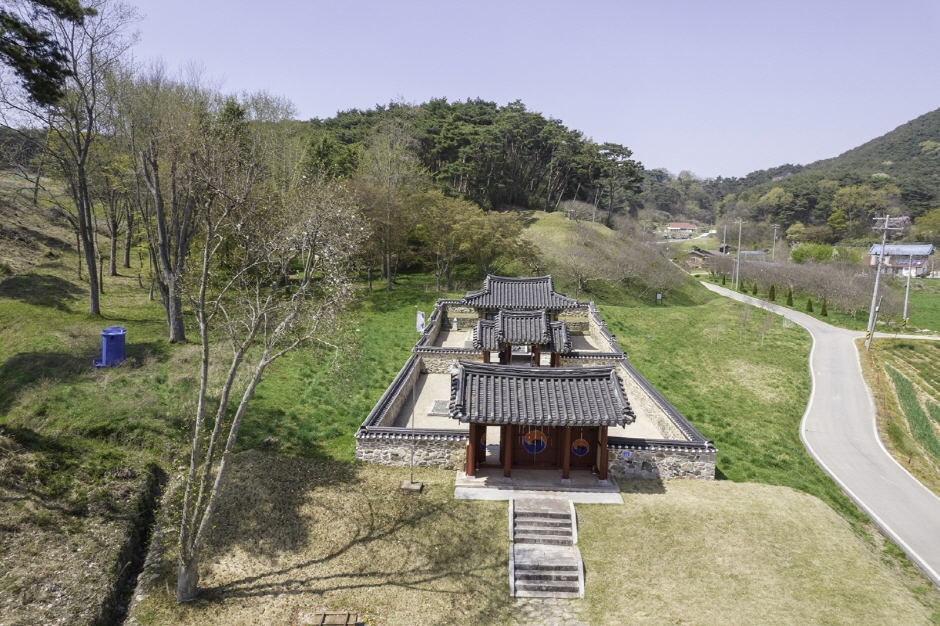
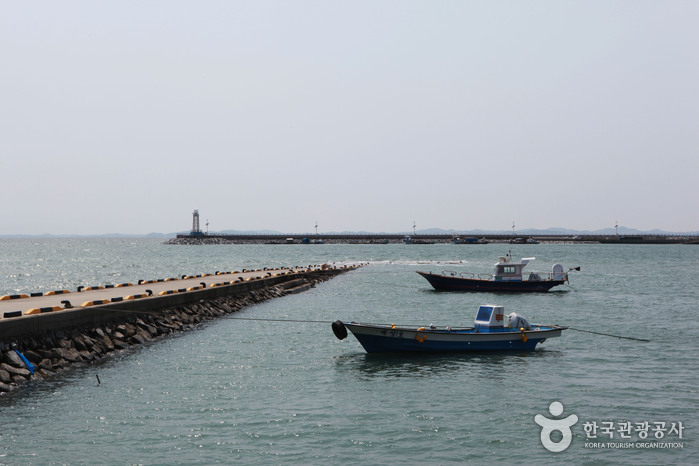
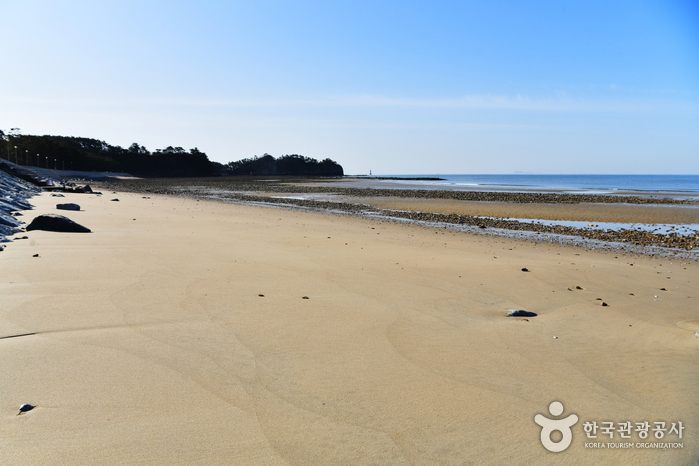
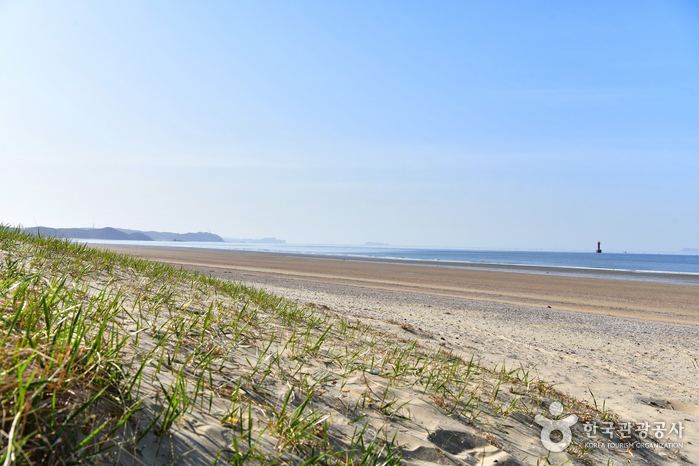
 English
English
 한국어
한국어 日本語
日本語 中文(简体)
中文(简体) Deutsch
Deutsch Français
Français Español
Español Русский
Русский